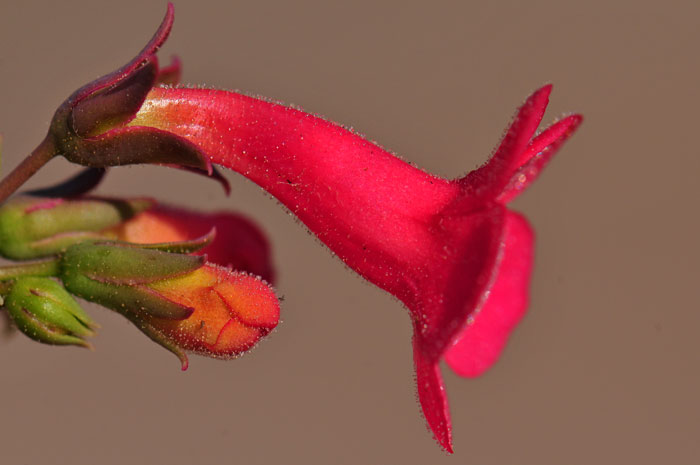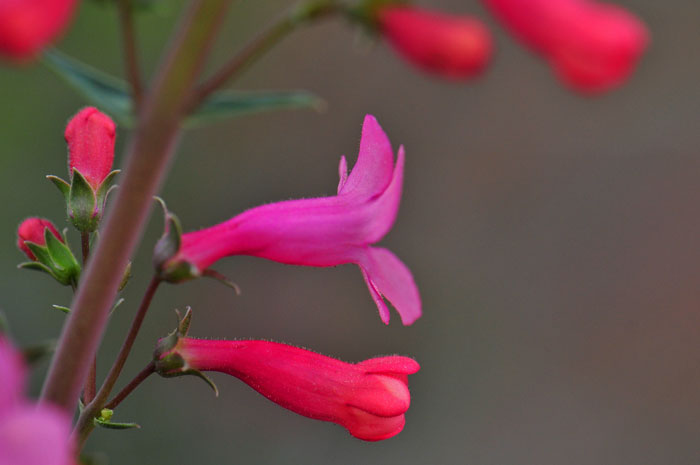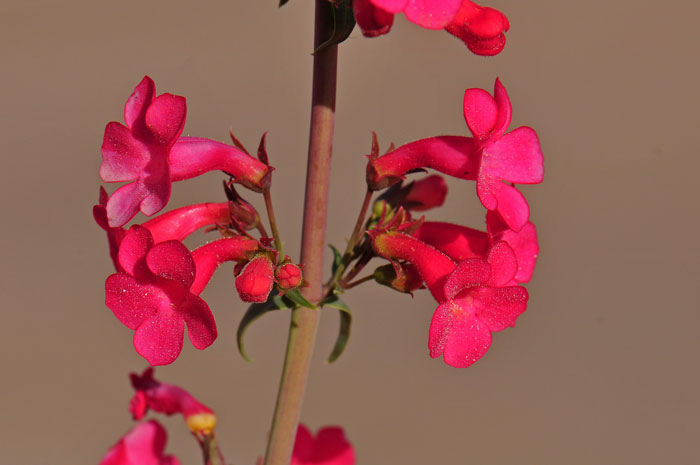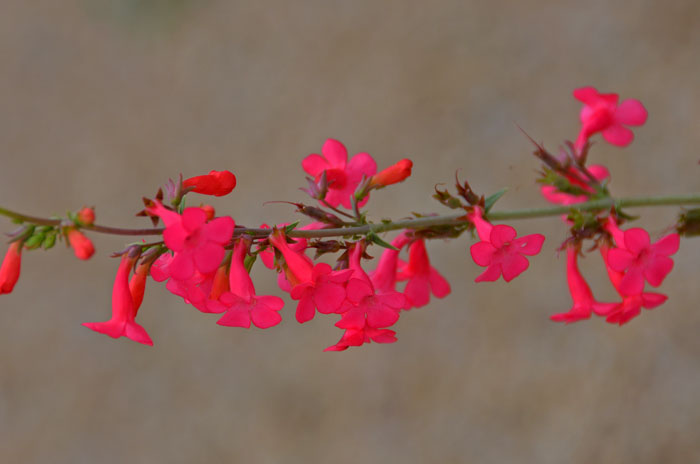Penstemon superbus, Superb Beardtongue




Scientific Name: Penstemon superbus
Common Name: Superb Beardtongue
Also Called: Superb Penstemon
Family: Scrophulariaceae, Figwort or Snapdragon Family - Moving to Plantaginaceae
Synonyms: ()
Status: Native
Duration: Perennial
Size: Up to 3 feet or so.
Growth Form: Forb/herb;
Leaves: Green; broadly ovate to oblong-ovate; blackening on dying.
Flower Color: Red, carmine to scarlet red; corolla narrowly funnel-form.
Flowering Season: April to May.
Elevation: 3,500 to 5.500 feet.
Habitat Preferences: Rocky canyons and along washes, sandy or gravelly soils.
Recorded Range: Penstemon superbus is relatively rare in the United States where it is found only in Arizona and New Mexico. It is also native to northern Mexico. In Arizona it is found in the south and southeastern parts of the state with few or no records in Pinal Gila County. In New Mexico it is found in the extreme southwest corner of the state in Grant and Hildalgo Counties.
North America & US County Distribution Map for Penstemon superbus.
U.S. Weed Information: No information available.
Invasive/Noxious Weed Information: No information available.
Wetland Indicator: No information available.
Threatened/Endangered Information: No information available.
In the Southwestern United States, Arizona there are 43 species of Penstemon, in California there are 55 species, Nevada has 50 species, New Mexico has 47 species, Texas has 24 species, Utah has 73 species. All data is approximate and subject to taxonomic changes.
Comments: Penstemon superbus is similar in habitat to Parry's Penstemon, Penstemon parryi, with which it might hybridize. This species with its tubular red flowers is attractive to honey bees.

